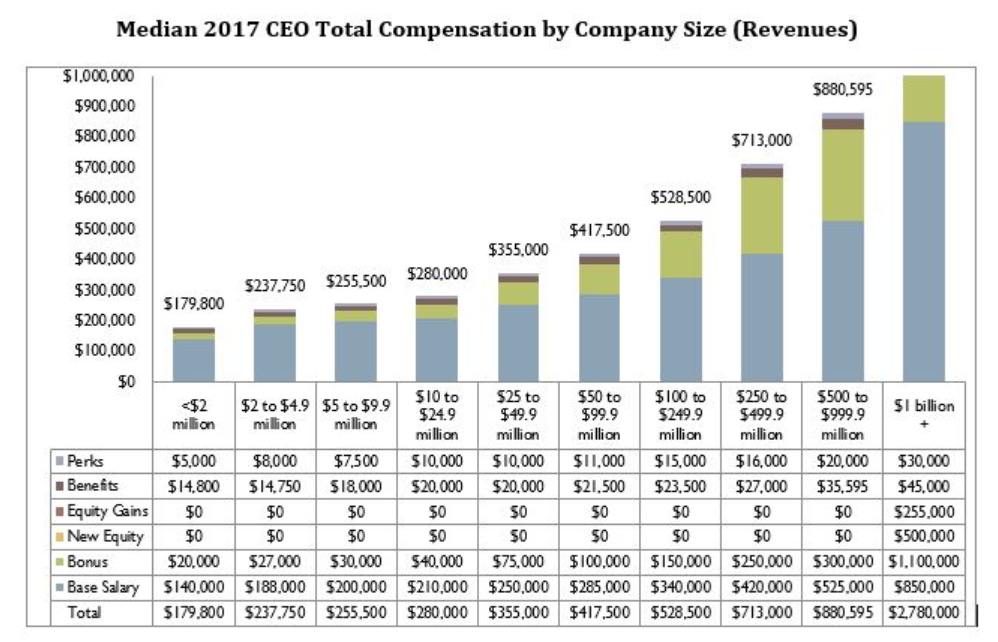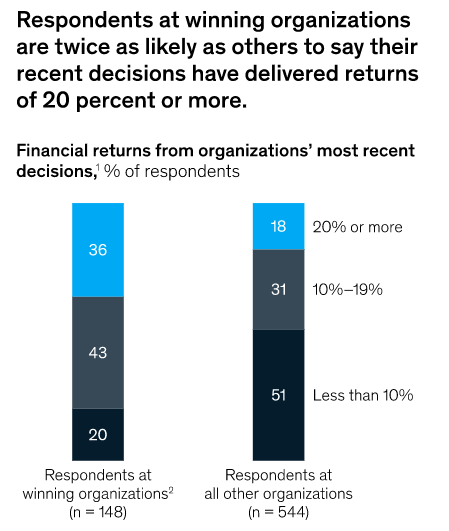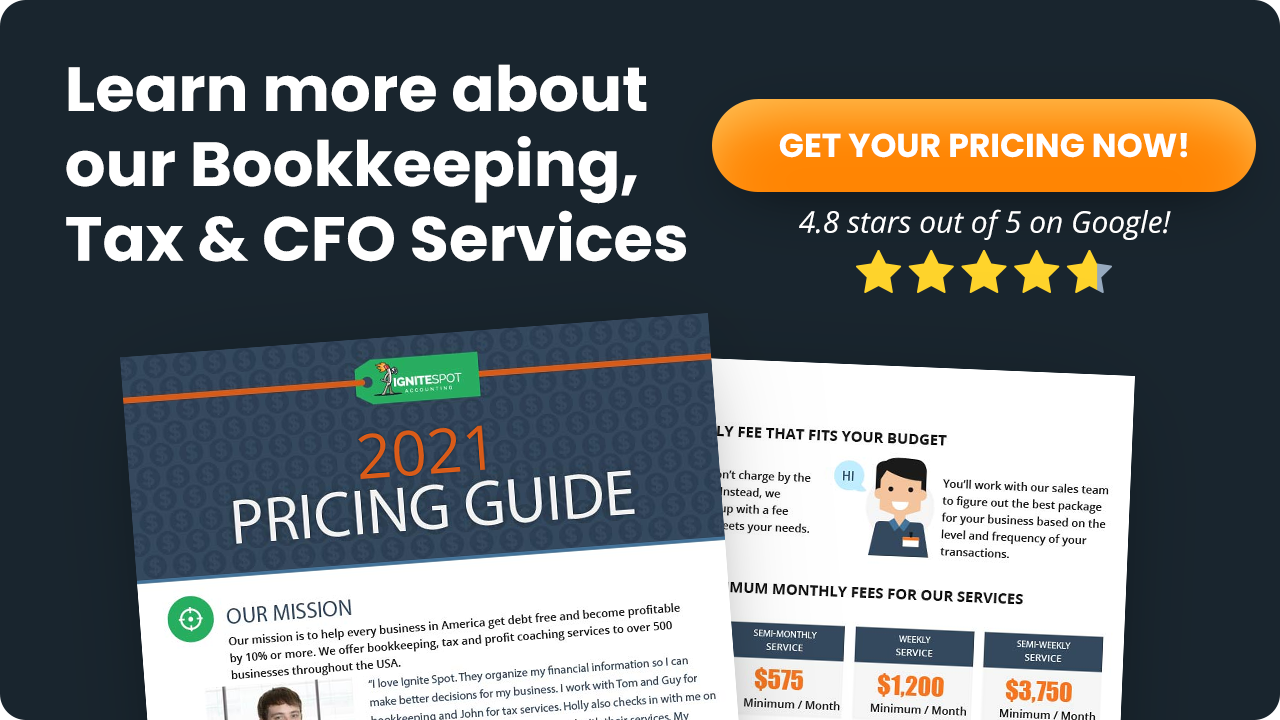
You’ve probably heard it before: What got you here won’t get you there.
Teaching a baby to walk transforms that baby into a toddler. But if you’re raising a teenager, you’ll need to invest in more than just praise, soft furniture, and walking props. You’ll need new tools, new knowledge, new processes—and some parents of teens would argue you’ll also need a new level of fortitude.
The same is true when you want to grow your business. Many business leaders launched their venture out of a home office with the support of a friend or spouse, a laptop, and some creativity. To grow that business into a thriving, $10 million company, they’ll need more than the same tools, people, and processes.
The good news is that we’ve worked with thousands of businesses and know exactly how it’s done. Here’s what you’ll need to start scaling up your business.
Get your mindset right
A leader’s mindset can take a company with nothing and turn it into a multimillion-dollar brand. But we’ve also seen that a leader’s mindset can turn a multimillion-dollar company into a feeble mess within months.
So, to prepare your own mindset for 10x growth, you’ll need to:
- • Reevaluate your risk aversion. Be honest with yourself about your tolerance for financial risk. If needed, talk to a leadership professional who can help you. You’ll need to keep your risk aversion in mind for every step that follows.
- • Determine if your realism is really negativity about the future, or if your optimism is truly complacency. Worry can sap the vitality out of a growth-minded leader, causing you to hesitate when it’s time to act. On the other hand, overly blithe leaders ignore important warning signs about the future.
- • Decide what you value. Some entrepreneurs have no desire to grow. Others hope to grow a company for the next generation, and some want growth only for themselves, not the company. Determine why you want to grow your business, and plan to remind yourself of this aspiration often.
Realign your mindset with the reality of the risks and rewards you’ll face throughout this next growth phase. Doing so readies you to tackle the following action steps needed to grow your business from that $1 million threshold to $10 million and beyond.
Learn to market correctly
Marketing is the biggest concern—and the biggest opportunity—for a $1 million business. That’s because, at this size, you can’t afford to hire the advertising agencies on Madison Avenue, and you don’t have the skill set to do the work of marketing yourself. This creates both hazards and advantages. Here’s how to avoid the former and seize the latter.
Experiment scientifically
At the $1 million crossroads, many leaders start experimenting. There are innumerable marketing channels, and many business owners aimlessly allocate resources to a few. But spending without a strategy is just scattering dollars.
Instead, learn about your target customers and use the medium best suited to them. Meet them where they already are.
Then, give your tests some time. Commit at least six months per medium or channel before determining if it’s a success or failure. This long-term move allows for a smaller daily spend and the freedom to perform mini-tests within those larger experiments. For example, within a social media channel, you can experiment with targeting options and creatives.
Invest a percentage of your revenue in marketing
Avoid the temptation to allocate a fixed amount for reaching new prospects. As you scale, so should your marketing efforts. This will help cover the new costs of your growing business. According to the U.S. Small Business Administration, at this stage, a smart allocation of around 7% to 8% of gross revenue should go toward marketing activities.
Assess what worked to grow your business, then repeat
Put limits on your experiments. Establish your goal and decide how you’ll measure success. Then, decide how long or how much money you’ll put toward the entire effort. If you don’t, that’s an indication you’re allowing yourself to get distracted. And that’s one of the most common marketing pitfalls in history.
So, set a cap—either a monetary amount or a time period—where you’ll stop trying a marketing method, and you’ll make a decision to either move on to the next experimental channel or scale up the one that delivered the best results.
Master the skill of recruiting
Many business leaders believe that recruiting only means hiring. But when you want to grow your business, it’s so much more than that.
Recruiting means hiring at the perfect time. “Growth mode” will end poorly if you hire before sufficient cash arrives to cover your new payroll roster.
It also means attracting the right talent for the right role. For example, hiring interns and recent graduates may cost less money, but requires more time and development than hiring more experienced candidates.
Finally, recruiting correctly means continually reminding yourself of the costs of hiring the wrong team members.
Do one thing really, really well
Most leaders today have insights that they couldn’t imagine having 10 or 20 years ago. Sadly, this often leads, ironically, to distractions.
For example, you realize that with a few tweaks, your widget could morph into a completely new product to serve a distinctly new market. The $1 million business leader who’s scaling to $10 million will table that idea indefinitely.
That’s because, in order to scale, leaders need to hone in on one to three products or services. Do those extremely well—and let the rest go for now. You’ll find that when you become “obsessed” with one thing, the other business functions need less propping up.
Look at how Zoom won in the pandemic. “Up 355% year over year,” brags line one of their newest quarterly earnings report. Google and Microsoft had similar video meeting products and unlimited resources, but they still lost out. If you fool yourself into thinking resources enable your win, remember this example. Focus enables 10x growth.
To achieve this, stop measuring things that you don’t plan to grow or improve now. Say “No, thanks” to tools that let you keep a finger on the pulse of areas that don’t yet matter.
And understand you’ll likely lose those battles you deliberately shelve for now. Because for every percentage of market share you lose in a market where you don’t belong, you gain a point where you are focused.
Hone in on one to three products or services. Do those extremely well—and let the rest go for now. – Eddy Hood, Ignite Spot CEO
Learn to pay yourself properly
Some leaders overcompensate themselves for their work, while others overwork themselves for little to no pay. Both will stagnate or sink a business quickly.
Paying yourself fairly and regularly is an essential step to grow your business from $1 million to $10 million.
Resist taking too much
An executive’s gluttonous paycheck will stop business growth by:
- Creating cash flow problems. Founders know that one of the quickest ways to run into cash flow problems (even for a profitable business) is to overpay people. Taking too much as the business owner is the most preventable version of this scenario.
- Sowing seeds of internal mistrust. Experts at Harvard Business Review recommend scaling back your own pay before cutting others’. “If you don’t, there is a danger that your staff will feel like saps, doing sacrifices while the C-suite continues unaffected,” they warn. “Get a commitment for a pay cut from your senior leaders. As CEO, you should take the largest salary cut yourself.” Remember, this is a temporary move. Once stability returns, resist customarily overcompensating yourself.
- Devaluing your company. Celebrated venture capitalist Peter Thiel claims that if a business owner’s salary exceeds $150,000, he dismisses the company as an unviable investment opportunity for his roster.
Resist taking too little
Conversely, long-term meager (or nonexistent) take-home pay will stop business growth by:
- • Sapping your energy. You might fix your personal vehicle and cut your own hair because it’s fun. But if you’re doing it because you’re not compensating yourself enough, you’ll be too exhausted to make important, time-critical decisions at pivotal times the following day.
- • Creating a toxic environment for other employees. Yes, overcompensating yourself breeds mistrust, but so does undercompensating yourself. Entrepreneur points out that the competitive nature of overworking and underpaying yourself discourages teammates and dares them to follow your unhealthy lead.
- • Turning your passions into your perils. The mental and emotional stress of working without pay—even for a product or service you love—puts you at risk of developing an aversion to that very thing. Envision the struggling baker who eventually can’t stand the universally loved smell of baking bread. Compensate yourself fairly to avoid that tragic conundrum.
Determine what’s standard for your business size, funding stage, goals, and industry. Check out Chief Executive magazine’s survey of over 1,600 privately owned U.S.-based companies for a ballpark idea.

Source: Chief Executive magazine’s CEO and senior executive compensation in private companies 2018–19
Make decisions quickly
Deciding quickly on things that don’t require deliberation or collaborative input can fuel $1 million to $10 million growth like no other action. A 2019 McKinsey study found that the companies whose leaders make good decisions faster reap financial benefits:

Source: McKinsey’s Decision making in the age of urgency
Here’s how to develop that kind of resolute, decision-making confidence.
Get comfortable not having all the facts before deciding
Jeff Bezos said in a recent shareholder letter that if leaders are waiting for 90% of the information to make a decision, they’re too slow. Leaders with a growth mindset should decide on things with around 70% of the facts. At Ignite Spot Outsourced Accounting Services, we’ve seen the evidence of this practice reward our business coach customers time and time again. We can also say the opposite is true: Leaders who dally at every crossroads continually struggle to grow—and they wonder why.
Learn the skill of speed
“When a decision is made is much more important than what decision is made,” writes Dave Girouard, CEO of Upstart (and former president of Google Enterprise Apps). “A good plan violently executed now is better than a perfect plan next week.”
Some choices do require committees and collaboration and presentations and sleepless nights. But the majority of them should take you less than 10 minutes to make. This is a skill you can—and should—learn. And the best part is that it takes nothing more than on-the-job practice.
Remember what fast decision-making does NOT mean
We’re not advocating for you to jump into things uninformed or take massive detours from your long-term strategic plan in favor of distracting “opportunities.” We’re also not telling you to exclude other team members or stakeholders.
There’s a balance between these extremes and the more common paralysis that prevents the $1 million to $10 million growth you’re seeking. Find it, and you’ll run laps around other companies endeavoring to do the same.
Look to examples of fast, quality decision-making by leaders
Model decision-makers exist. Curate your own headlines to observe their decisive skills in action.
For example, you probably don’t want to follow Elon Musk to emulate his social media skills, but reading stories about how he handles challenges can inspire you to exercise your new, faster resolution.
Another example is the mining company McKinsey analysts describe in Three keys to faster, better decisions. They improved their meeting effectiveness by 50% by deciding quickly and unwaveringly to implement more stringent expectations.
Finally, SH1FT Digital’s co-founder Aristide Basque describes how cutting ties with a difficult anchor customer hurt at the time, but quickly restored their brand’s invaluable reputation.
Build safety nets along the way
Natural disasters, economic downturns, sociopolitical tensions, global deals, and yes, pandemics, will happen in the future. Company leaders who want to grow from $1 million to $10 million have to prepare for tragic misfortunes, whether they’re internal, hyper-local, or worldwide. This means you should:
- • Keep a line of credit open
- • Accumulate a liquid, six-month “emergency fund”
- • Consider getting a keyman insurance plan
- • Get cash-flow projections and prepare for the modeled scenarios
- • Create a business recovery plan—and review it regularly
You can and will grow your business 10x if you know what (and what not) to do.
A few years ago, business news publishers pounced on a rumor and turned it into a trend. You’ll likely remember it: 90% of startups fail!
Suddenly, misleading clickbait headlines piled on, and entrepreneurs everywhere worried for themselves and their employees’ livelihoods. But with the right leadership, focus, and commitment to these core principles, you don’t need to be part of that eye-popping statistic. Instead, you’ll be on your way to that $10 million threshold in no time.
Consider getting the help of a virtual CFO to help you see your trajectory, scale-up, and make the best decisions. Sign up now to get a free virtual CFO session and learn how we can help your business grow from $1M to $10M.













.png)




